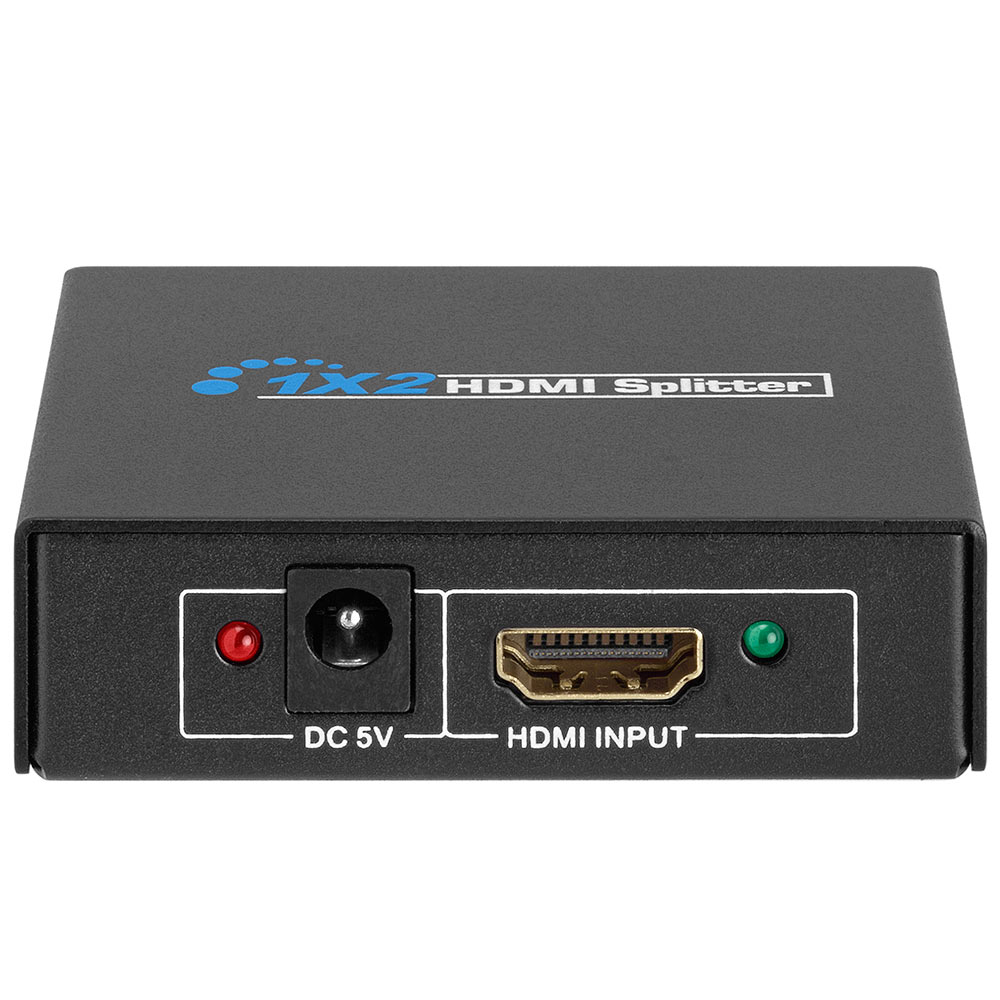


- #HDMI TO AUDIO SPLITTER HOW TO#
- #HDMI TO AUDIO SPLITTER INSTALL#
- #HDMI TO AUDIO SPLITTER UPDATE#
- #HDMI TO AUDIO SPLITTER MANUAL#
- #HDMI TO AUDIO SPLITTER WINDOWS#
Gofanco mDP to DVI Active Converter (Model mDPDVIA) - ActiveĬable Matters mDP-to-DVI (model 101022) - Active Surface Mini DisplayPort to HDMI 2.0 Adapter (Model 1819) - Active Surface USB-C to DisplayPort Adapter for Business For other options, see Officially licensed third-party accessories. The adapters listed in the table have been tested for compatibility and can help solve video issues. If your monitor doesn’t support DisplayPort or USB-C, we recommend using HDMI. Remove the adapter and reinsert it firmly to make sure it’s connected to your Surface. If you’re using an adapter (like a USB-C to HDMI Adapter, USB-C to DisplayPort Adapter, or USB-C to VGA Adapter), check your connection. For example, this might be called Multi-Stream Transport (MST), which allows the first display to pass the signal along to the second external display. If only one of your external displays has an output port, connect your Surface to that external display first.Ĭonnect the output port of the first external display to the DisplayPort input port of the other external display.įollow the monitor manufacturer’s instructions to set both external displays to use DisplayPort 1.2 as an input source. Using a Mini DisplayPort to DisplayPort cable, connect the Mini DisplayPort on your Surface to the DisplayPort input on the first external display.
#HDMI TO AUDIO SPLITTER HOW TO#
If you're using a non-Surface video adapter, contact the adapter's manufacturer for help/troubleshooting.įor external displays compatible with daisy chain, please contact display manufacturer for configuration details and specifications.Īs an example, here is how to set up daisy chain with DisplayPort: If you're using a video extension cable or video adapter or converter, remove it from your set up to see if it’s causing the problem. If the cable that came with your monitor isn’t responding, use a different video cable to connect your Surface. Use the cable that came with your monitor, and if using USB-C, confirm it supports video. Check the connection from the USB-C port or Mini DisplayPort on your Surface, docking station, any video adapter you are using, and the input connection on your external display. Make sure all the video connections are secure. If using thunderbolt connection with USB-C, make sure your cable is rated version 4.0. If using an HDMI video cable, make sure it's rated version 2.0, or, if using DisplayPort cable, it's rated 1.2, and is no more than 6 feet (1.8 meters) long. Wirelessly connect to compatible displays by using Miracast (all Surface models can do this).Ĭables are an essential part of having a working connection to your external display. See everything on the external display only (your Surface will be blank). When you have displays extended, you can drag and move items between the two displays and select a different resolution for your external display (to learn more about display resolutions, go to Solution 7). Move what's on your Surface to an external display. See the same things on both your Surface and on the external display (to learn more about display resolutions, go to Solution 7).
#HDMI TO AUDIO SPLITTER WINDOWS#
Press the Windows logo key + P on your keyboard, then select what you want to do according to the following table: Solution 4: Duplicate or extend your display onto your external display
#HDMI TO AUDIO SPLITTER MANUAL#
Adjusting this setting may produce better results.įollow the instructions in the display's manual or check the manufacturer's website. Most external displays have an on-screen menu that adjusts the port version used by the display. Solution 3: Check the port version setting on the external display Note: Common video input settings include VGA, DVI, DisplayPort, HDMI, Input, and Source. For example, if you’re using a DisplayPort connection to an external display, that display must be set to recognize DisplayPort as the video input signal. If you’ve connected your Surface to an external display, make sure your external display is set to the current port. Solution 2: Check the video input settings Solution 8: Try the adapter on a different external displayįor another possible quick solution, unplug your monitor from the power outlet and then plug it back in. Solution 7: Change the supported resolution and refresh rates Solution 4: Duplicate or extend your display on the external screen Solution 1: Power reset your external display If you have problems connecting your Surface to a TV, monitor, or projector, try these solutions to identify the issue.
#HDMI TO AUDIO SPLITTER UPDATE#
Open Windows Update Troubleshooting solutions
#HDMI TO AUDIO SPLITTER INSTALL#
To find out how, see Install Surface and Windows updates. Often, downloading and installing the latest updates for Windows and your Surface will fix many issues.


 0 kommentar(er)
0 kommentar(er)
